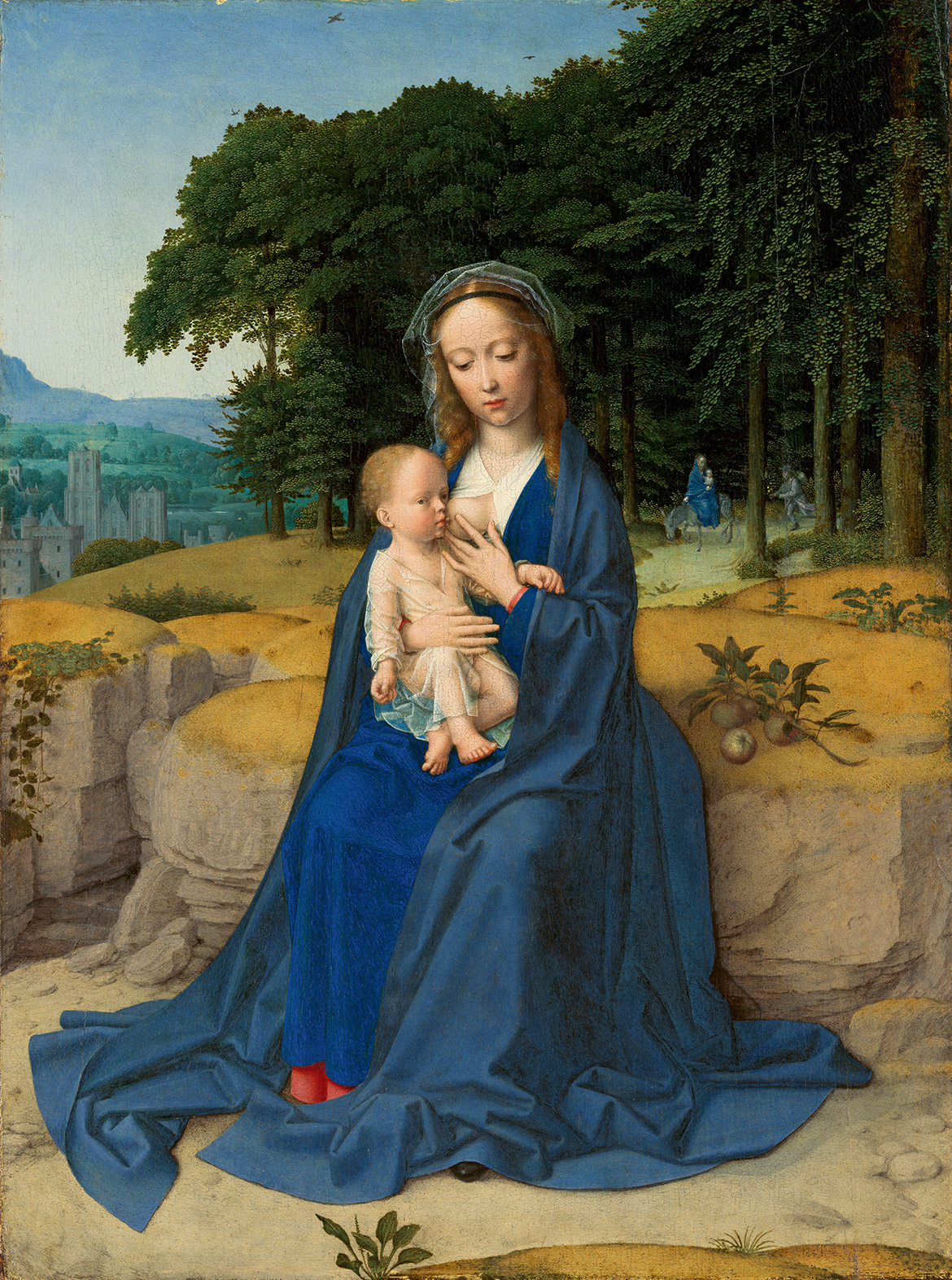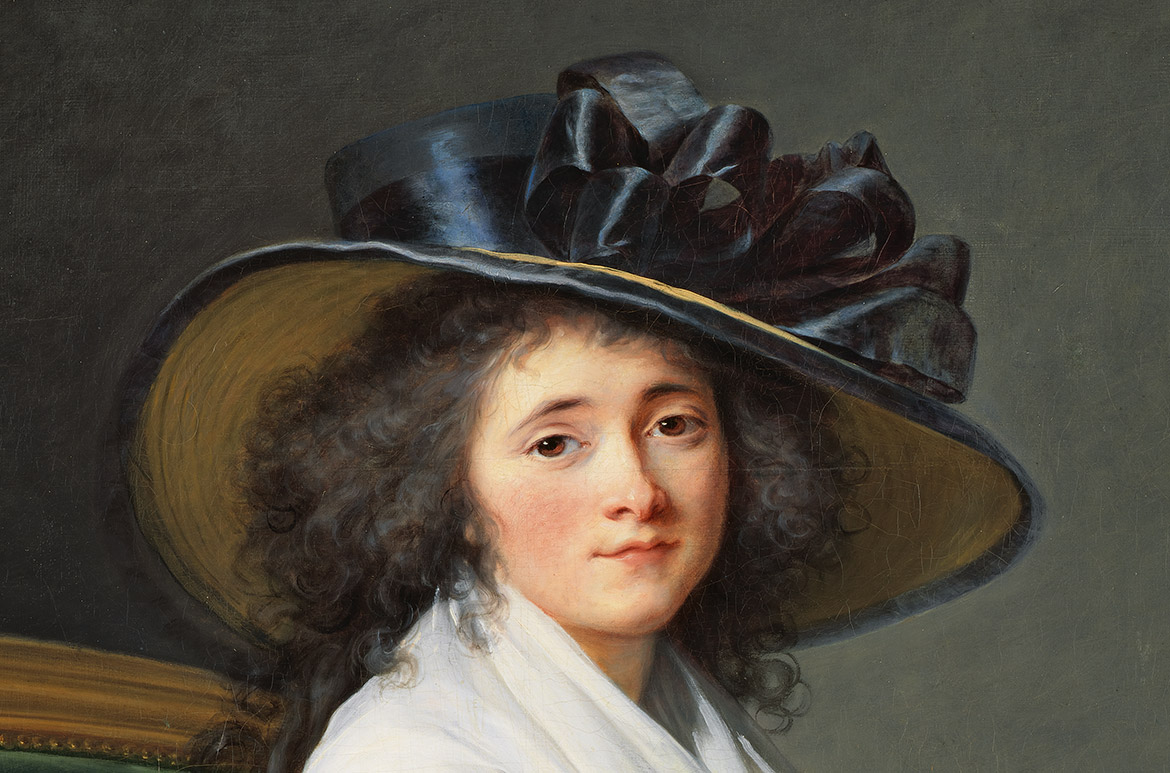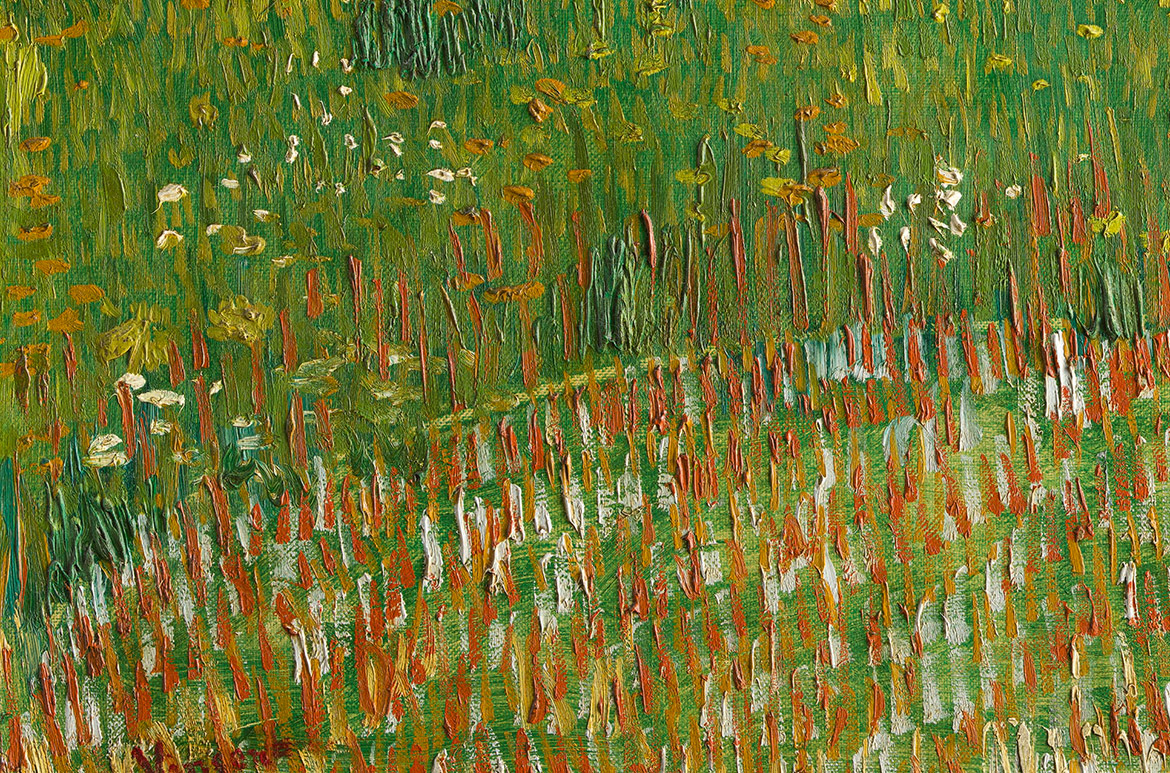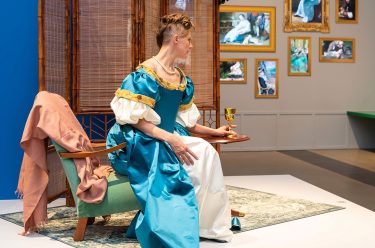From an exquisite devotional scene, to a young Comtesse who was part of the royal court of Queen Marie-Antoinette, and a fleeting impression of nature, these works by Gerard David, Elisabeth Louise Vigée Le Brun, and Vincent van Gogh span 300 years of innovation, reaching forward from the past to touch and move us in the present.
These three paintings from one of the world’s finest art museums in ‘European Masterpieces from The Metropolitan Museum of Art, New York’ each tell a story offering a window into the artists’ creative process.

LIST OF WORKS: Discover the artworks
DELVE DEEPER: More about the exhibition
THE STUDIO: Artworks come to life
WATCH: The Met Curators highlight their favourite works
Gerard David ‘The Rest on the Flight into Egypt’ c.1512–15

The rhythms of blue and green in this painting create a sense of calm and serenity, linking the Madonna and Child to a distant version of the family emerging from the woods on a donkey, including Joseph following behind. Painted late in Gerard David’s life it incorporates Italian Renaissance techniques. The pyramidal form of the Madonna; subtle chiaroscuro, or modelling, of shadows; and the sense of aerial perspective in the distant landscape. Italian influence is also seen in a shift from the traditional portrayal of the Madonna as an icon towards her depiction as a human presence ― a mother tenderly caring for her child.
The rich blues of the robes that drape the Madonna are striking and luminous. In contrast, glimpses of a red chemise peek out near her toes. Blue is associated with value and the Sacred, and became the official colour of the Madonna in the fifth century. The esteem given to colour blue is related to its rarity as a pigment ― especially the prized ultramarine.
Ultramarine means ‘from beyond the sea’. It is a naturally occurring metamorphic rock and in David’s time it was imported from Afghanistan and was more expensive than gold. Once extracted from the rock into a precious pigment, it was used sparingly in paintings, typically as the final glaze in the robes of the Madonna.
The more affordable, though still valuable, Azurite, was also a very important blue pigment. It is often found modelled in layers under ultramarine glazes. It is greener in tone than ultramarine and is used mixed with other colours to form purples, greens and also for shades of blue in the sky. In a coarse grind, Azurite retains its deep blue colour, however it is sandy in texture and requires great skill to use.
As we look at this painting today, the blues in the robe appear to complement the mustard-coloured background grass. However, scientists at The Metropolitan Museum of Art have found that a red dye mixed with the blue of the outer robe of the Madonna has faded, leaving it much less purple in colour than when first applied. The background grass has also browned due to discolouration of the artist-applied copper resinate glazes ― a colour shift which is characteristic of paintings from this period.

Elisabeth Louise Vigée Le Brun ‘Comtesse de la Châtre (Marie Charlotte Louise Perrette Aglaé Bontemps, 1762–1848)’ 1789

This portrait by French eighteenth century artist Élisabeth Vigée Le Brun depicts a young Comtesse who was part of the royal court of King Louis XV and Queen Marie-Antoinette. Here she’s shown lounging against velvet cushions; with a book in hand. Her hair is softly curled and unpowdered and her gaze direct. Her white dress forms a strong contrast with the dark background, which in turn draws attention to the deep blue of the satin ribbons piled on her hat and adorning her waist.
This distinctive colour known as Prussian blue was the first modern synthetic pigment. It was accidentally discovered in 1704 by an alchemist who had been employed by the king to create gold from base metal. Vigée Le Brun was among the first group of artists known to have used the new pigment, which allowed subtle modulations of tone and hue.
As a woman, Vigée Le Brun did not have access to formal training, she learnt to paint from her father, who passed away when she was only 12 years old. Despite this, by the time she was 19 she had forged an independent career and become the favoured portraitist of the Queen, whom she would paint more than 30 times. They were born in the same year — 1755 — and are said to have become close friends. One of her portraits of Marie-Antoinette in an informal muslin gown created a scandal when it was shown at the Salon. It was considered disrespectful of her rank — though it did not harm the artist’s reputation or the demand for her portraits.
In her portrait of the Comtesse de la Châtre, the young woman is depicted in a similar muslin dress. The painting is also emblematic of a specific moment in history. In 1789 — shortly after it was painted — the King and Queen were arrested and imprisoned and both the Comtesse and the artist were forced to flee revolutionary France.

Vincent van Gogh ‘The Flowering Orchard’ 1888

In the mid-1800s, artists began to use colour like never before. Instead of depicting the real tones of life, the Impressionists sought to use colour to capture fleeting visual moments. Vincent Van Gogh encountered this new style of painting in Paris and was inspired to adopt a similar palette for his work.
Van Gogh had been painting for around seven years when he made The Flowering Orchard in 1888. Earlier that year, he had packed up his life in Paris and moved to the rural south of France. Here his passion for colour was heightened by the light-filled countryside and he often worked outdoors. He had a burst of creative energy and painted some of his most iconic works before his untimely death just two years later.
While mass produced oil paints were already available to artists, Van Gogh was aware that machine grinding produced pigments which were very fine and this reduced the brilliance of some colours. Because vibrant colour was so important to him, he was known to order paints with coarsely ground pigments prepared by hand in colour shops.
Van Gogh was also aware that his paintings could change colour over time. He chose to paint with his whites and blues ground in poppy seed oil, rather than linseed oil as he knew poppy seed oil was less likely to yellow. Unfortunately, some of his most favoured pigments have been unstable over time. The sky in The Flowering Orchard contains geranium lake, an organic dye, which has faded badly. It was once a much stronger pink as can be glimpsed in paint hidden by the frame where it has been protected from light. The use of chrome yellow means that bright yellow passages may also have darkened to brown leaving us to imagine how much more resonant his use of contrasting and complementary colours was intended to appear.

This Australian-exclusive exhibition was at the Gallery of Modern Art from 12 June until 17 October 2021 and organised by The Metropolitan Museum of Art, New York, in collaboration with the Queensland Art Gallery | Gallery of Modern Art and Art Exhibitions Australia.
Featured image detail: Vincent van Gogh The Flowering Orchard 1888
#QAGOMA #TheMetGOMA


